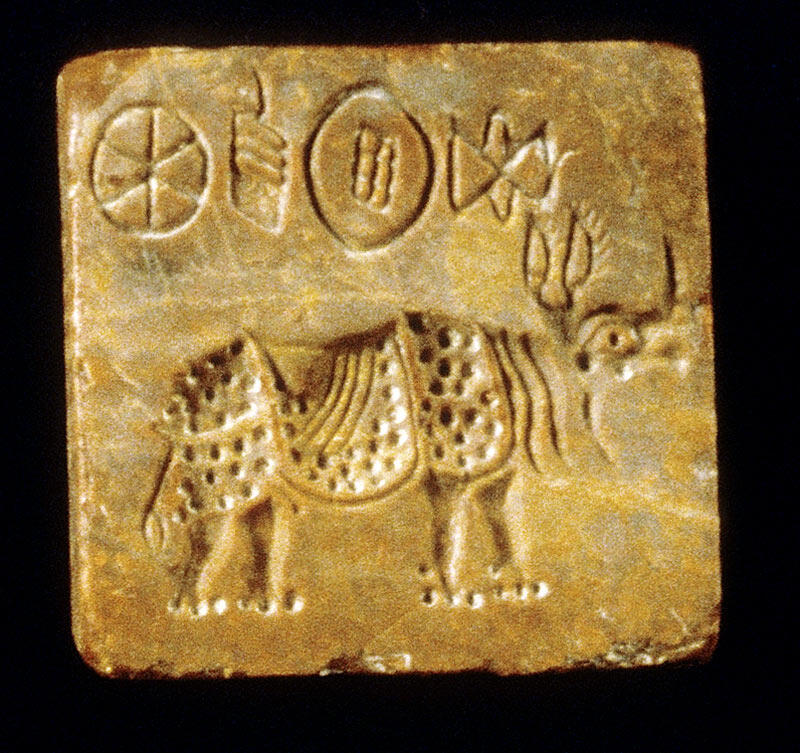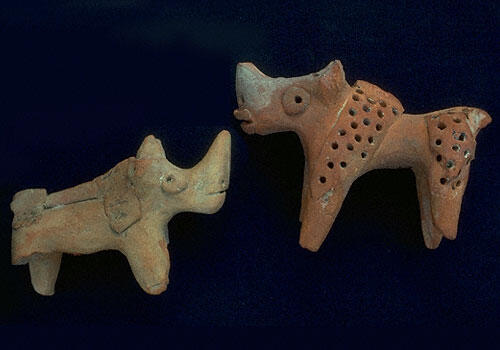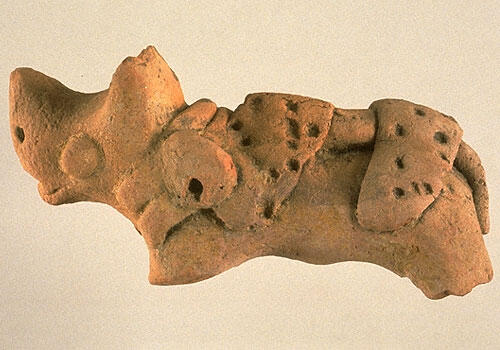February 19th, 2019
In the excellent new book The Story of India's Unicorns (Marg, 2018), which is all about the rhinoceros in the subcontinent, Shibani Bose writes in the section Evidence from Indus Sites that what "needs to be explained is the presence, and in cases like Kalibangan, the profusion of rhinoceros remains at some of the major urban sites of the civilization. Not just bones, even the Harappan visual archive consisting of seals, terracottas and copper tablets seems to suggest that the animal was seen frequently. If we consider the argument that that the bones of animals not usually domesticated or not normally eaten are likely to be rare in archaeological deposits, then Harappan testimonies regarding the presence of the animal along with its popularity as a subject of portrayal raise numerous possibilities that must be explored. These range from the exploitation of the animal for its meat and other parts to the role of the animal in the religious life of the people.
"Even when we consider the representations of the animal, the qualitative details and graphic fidelity suggest a close familiarity with the subject, which seems remarkable in the context of a civilization known for its urban character. In the terracotta figurines at Mohenjodaro, for instance, the wrinkled skin is realistically portrayed by hatching or pitting in some cases, while in others, strips of clay are used to show the folds in its hide.
"The frequency of representations too suggests that the animal was well known. Its popularity as an object of portrayal is reiterated by the fact that rhino depictions comprised 6.3% of the terracotta collection at Harappa. This figure is particularly striking since it is more than double the representations of commonly kept animals like sheep and goat.
"The animals appearance on seals leaves no ambiguity regarding the fact that in every case it is the one-horned rhino that is depicted. Elaborating on one such seal, Ernest Mackay noted the well-represented thick hide with the nearly real wrinkles and folds of the skin. Rough excrescences of the skin were indicated in some cases with holes made with a fine drill while in others, hatched lines were employed. The animal was delineated with remarkable faithfulness that even resulted in an exaggeration of detail at times.
"Apart from these solitary portrayals, there were more complex ways in which the creature fired the Indus imagination. Curiously, it is sometimes shown standing over a manger-like object. John Marshall was emphatic about the fact that these depictions bore no relation to domestication. His own sense was that these troughs were meant to symbolize food offerings, and that their presence implied that the animals to which these offerings were made, whether in captivity or in the wold, were objects of worship. Equally intriguing is the presence of a collar of two bands in rhinoceros figurines from Harappa." [Images 2, 3] (India's Unicorns, pp. 46-8)
1. Rhinoceros seal from Mohenjo-daro
2. Rhinoceros figurines from Harappa.
3. Rhinoceros figurine from Harappa.






